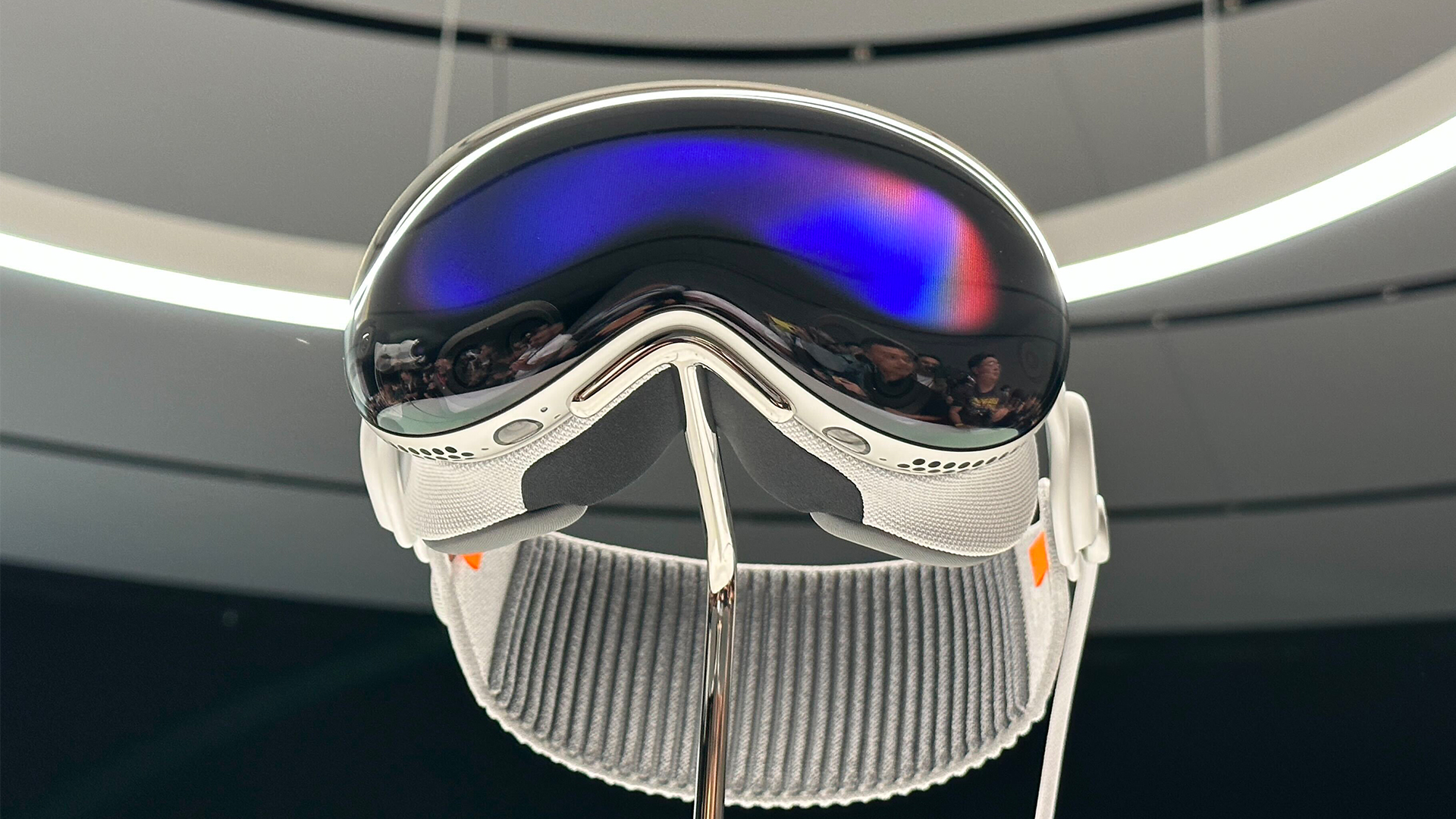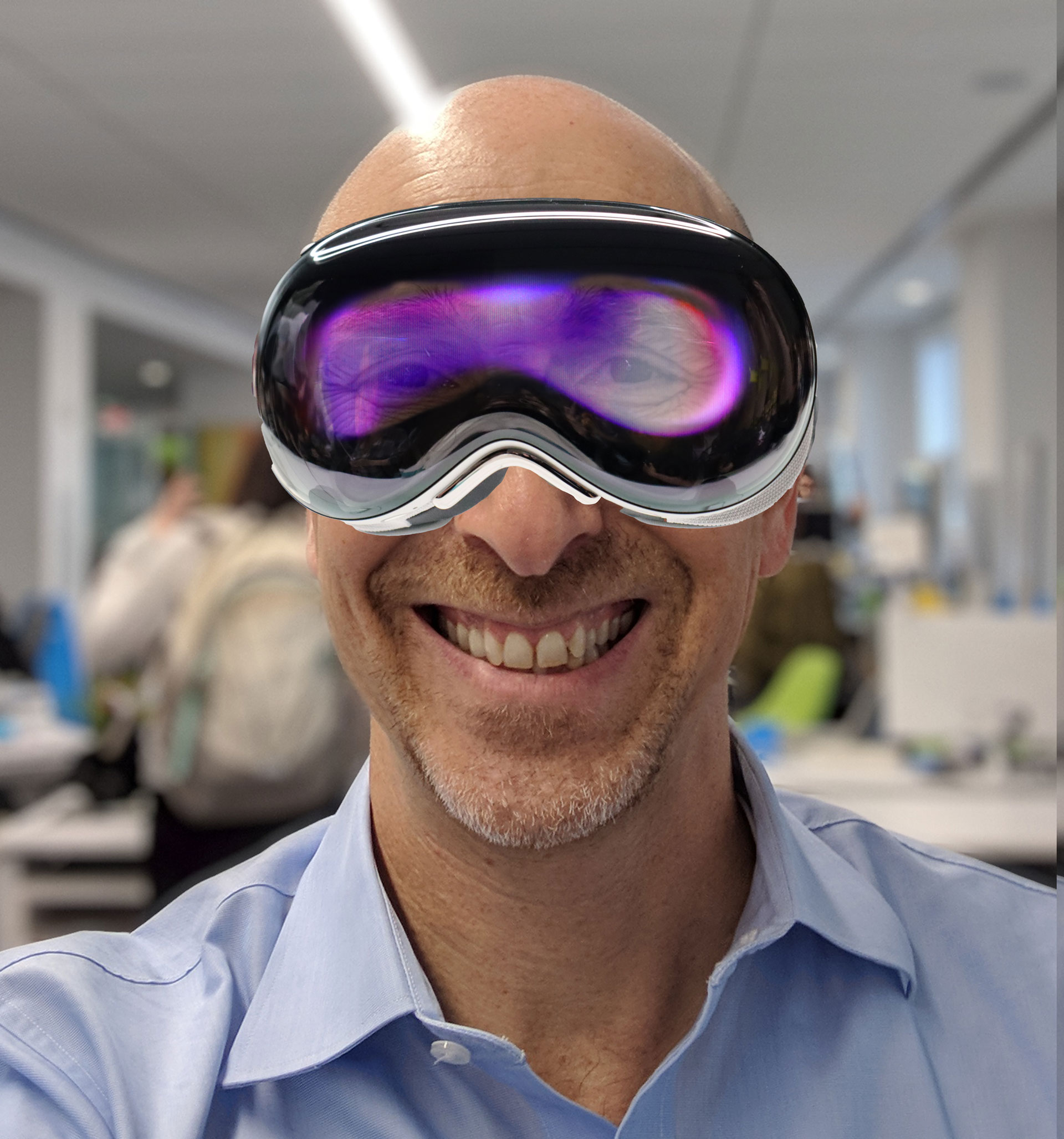Apple Vision Pro is the best gadget I've seen in ages but it still needs a purpose
Opinion: Apple Vision Pro will fail if it doesn't follow these 5 rules

Apple Vision Pro is easily the best piece of virtual reality hardware I have ever worn, and yet it still might fail.
The key to hardware and software success is not innovation alone. Here are the five rules:
1. Attainable
2. Easy to use
3. Make sense to the average person
4. Have a purpose or solve a problem.
5. Innovate on what already exists
Sign up for breaking news, reviews, opinion, top tech deals, and more.
Okay, those are my rules and might not align with yours or, say, Apple CEO Tim Cook's.
Let's assume for the moment though that these are the rules by which all technology abides. Apple Vision Pro, which Apple unveiled at WWDC 2023 on June 5, wins handily on Number 5.
There has never been a mixed reality set quite like it. It takes the state of the art in AR and VR and with a mix of bleeding edge components (Apple Silicon M2, R1, micro-LEDs with dual-4K imagery) and a surprisingly well-thought-out software platform, pushes it to new frontiers.
It's rare to find brand-new, cutting-edge technology that works as effortlessly as the Vision Pro.
It wins on the ease-of-use front for the same reason. It's rare to find brand-new, cutting-edge technology that works as effortlessly as the Vision Pro. Thanks to an excellent gesture and gaze-driven interface, there is no learning curve, just the mind-bending reality curve of fantastic AR and VR experiences.
Not everyone understands mixed reality but I think Apple did an admirable job on Number 3 by not digging too deep into the technology and putting the unusual-looking headgear in context.
Three out of five is pretty good and if owning the coolest thing around were a benchmark for success, Apple Vision Pro will be a blockbuster. However, we do not live in a world where any VR headset could be considered iPhone-level successful.

Unless you're a gamer, there's a solid chance that the VR headgear you invested in a year ago is now gathering dust. VR and mixed reality has generally failed in the consumer space because it doesn't answer Number 4: solving a real-world problem.
Let me put it this way, You drive a car because you can't travel long distances in a reasonable amount of time without it. You wear glasses or contact lenses because you can't see without them. You have an Apple Watch on your wrist because, first and foremost, you want time on your wrist. You carry a smartphone so you can stay connected and communicate with anyone in the world.
What, though, will compel you to own and use Apple Vision Pro every day?
I enjoy VR and mixed reality experiences as much as the next person (okay, maybe more), but I can also live without them. There is no problem solved for me by petting virtual dinosaurs in my living room.
Meta and Mark Zuckerberg did their best to manufacturer a reason to buy its Meta Quest headsets: the Metaverse. Consumers, though, weren't fooled. The real world may be a harsh place but most people still seem to prefer it over living and working in a manufactured virtual world.
Apple, to its credit, didn't pitch a new AppleVerse to go along with its Vision Pro but that also means that there's no singular reason for plunking down $3,500 (est. £2,200 / AU$4,400 and not counting image-correcting lens inserts) to experience the best in VR and AR technology.
Instead, it's a collection of experiences and possibilities that, in general, improve what you do in the real world. Watch massive-screen movies in the home, extend your desktop to all corners of your home office, and conduct FaceTime calls using an uncanny valley avatar.

Apple Vision Pro doesn't have a core purpose because it's a computing – I mean "spatial computing" – platform. And like most platforms, it can be anything you can load into it. It's the Windows 11 version of VR and AR. It's what Microsoft tried and ultimately failed to build with HoloLens.
On the business and productivity front, Vision Pro inches closer to the Number 4- satisfying utility I desire. At home, I use three different physical screens and wouldn't mind more. Desktop space that fills a room could be a game-changer. But to get it, I have to wear the headset.
And when it's time for a coffee break, I better not just get up and start walking around my real office. I imagine an office full of workers finally leaving their Vision Pros untouched on their real desktops because they were tired of taking them off every time they took a bathroom break.
As for Number 1, Apple Vision Pro is, obviously, unattainable right now but even when it does ship next year, $3,500 is cost-prohibitive for most consumers, and when they're trying to justify spending that much on cutting-edge AR and VR they'll be asking themselves the same question: Why do I really need it?
P.S. I still want it.

A 38-year industry veteran and award-winning journalist, Lance has covered technology since PCs were the size of suitcases and “on line” meant “waiting.” He’s a former Lifewire Editor-in-Chief, Mashable Editor-in-Chief, and, before that, Editor in Chief of PCMag.com and Senior Vice President of Content for Ziff Davis, Inc. He also wrote a popular, weekly tech column for Medium called The Upgrade.
Lance Ulanoff makes frequent appearances on national, international, and local news programs including Live with Kelly and Mark, the Today Show, Good Morning America, CNBC, CNN, and the BBC.